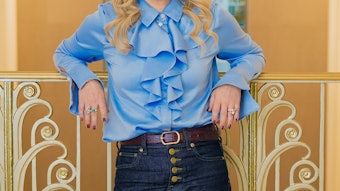Any business in any industry is both consumer and creator of consumers. There is no denying the range of benefits this has meant for the quality of life and the proliferation of businesses, but we’ve long operated and consumed in bubbles, allowing ourselves to disconnect what and how we consume from the impact of consumption. Sustainability is about taking a pin to the bubble. It’s eliminating the disconnect, realizing a continuum, recognizing cause and effect.
It is difficult to lay blame, if there is indeed blame to be had, for how industry has served consumer bases. Industry had a goal, to create desirable products to serve a given need. Then industry was challenged: how to create enough product effectively and efficiently enough to serve an ever-growing population of consumers. The challenge was undertaken and, largely, solved. But in doing so, the bubble was created. In both the quest to serve more consumers and in the accomplishment of that quest, it was difficult to consider anything else—the consequences of creating.
But, before world leaders met in Copenhagen, it was clear that a turning point had been reached. Momentum toward sustainability/eco-friendly/green has been evident, but both suppliers and brand owners made 2009 a year in which many of these efforts were primary and crucial to the brand mission.
It may be true that what spurred many efforts was improved cost efficiencies; it may also be true that the economy played its own instigative role. In the July 2009 issue of GCI magazine, Liz Grubow wrote that the downturn of the global economy resulted in consumers slowing their consumption habits. Beauty marketers, fueled by this trend, divested in busy aesthetics, excess packaging and multiple vessel shapes/sizes to concentrate more on brand storytelling, introducing refillables and using materials that harken back to the past—i.e., glass bottles, natural ingredients. In other words, sustainability grew as a necessity in order to continue to sell to consumers growing reluctant to buy.
Even if this was the lone factor—though doubtful, after considering a broader scope of efforts, such as the cradle-to-cradle initiatives in which waste is eliminated by recycling materials or products into new or similar products at the end of the intended life—so what? Is it the cause or the effect that is critical here? It’s arguable that the effect is much larger in this case. Grubow, in her July 2010 column, outlined major brand after major brand undertaking sustainable efforts, and those efforts are not waning.
Recently, GCI received a press release detailing the launch of a partnership between Aveeno and TerraCycle, a company that seeks eco-friendly uses for companies’ waste streams. In this partnership, Aveeno product tubes will be “upcycled” into, for example, household items that will then be available for purchase at major U.S. retailers. This unique partnership, according to the brand, offers communities a chance to make sustainable strides; Aveeno “Beauty Brigades” are formed across the U.S. to collect the empty elongated Aveeno product tubes from sun care, facial care, baby and body care products.
“We are incredibly proud of the progress the Aveeno brand has made in terms of sustainability,” said Michael Marquis, group product director, Aveeno. “We continue to look for ways to improve our eco-conscious practices, from how we source ingredients and packaging materials to reducing waste and resources needed for product transport. It’s through our collaboration with partners like TerraCycle that makes it possible for us to expand our commitment to sustainability, giving back to the community and improving our environment.”
Brand efforts, too, go beyond simple investments at the product-consumption level. In 2009, SC Johnson invested $4.7 million in its Mijdrecht, Netherlands, facility to build and operate a 262-foot wind turbine designed to provide 66% of the plant’s power while cutting greenhouse emissions for an offset equivalent of planting 110,000 seedlings or saving 30 acres of forest.
Each page of any given issue of GCI or this Web site could be filled with more examples. And as we progress through 2010, expect to see more of these efforts.
“While 2009 brought its challenges for the industry, beauty brands and suppliers have continued to seek creative new ways to merge science, nature and sustainability for better results and more eco-friendly formulas and packaging,” said Nica Lewis, director, Mintel Beauty Innovation, discussing Mintel’s forecast for 2010 beauty trends. “In 2010, we will see more consolidation in the beauty industry and the evolution of old trends, as well as new ones, as consumer confidence returns.”










